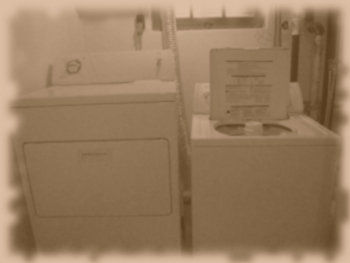Home inspection after home inspection reveals a few common problems with laundry areas. They’re not big problems, meaning that buyers usually don’t ask the seller to do anything about the issues, but a couple key things are flagged with surprising frequency.
 1. Your washer should connect to the hot and cold water supply using steel braided hoses. The rubber hoses that are commonly observed are vulnerable to weakening over time and can potentially rupture.
1. Your washer should connect to the hot and cold water supply using steel braided hoses. The rubber hoses that are commonly observed are vulnerable to weakening over time and can potentially rupture.
2. You should turn off the water supply to your washer between uses. This is more of a precautionary suggestion just in case there is a failure within the washing machine itself. Water creates a really big mess, especially if there is important stuff below the leak.
3. Dryer vent ducts should take a direct and efficient route to the outside. Flexible vents should be used as little as possible, with 18 inches as an upper limit. Rigid metal ducting is preferred since it is smooth and will catch less lint, and is therefore less of a fire hazard. Even the rigid ducts should be as short and straight as possible, with horizontal runs sloping slightly downwards.
After hearing these same findings a bunch of times, I’m finally adding them to the list of projects that I should be working on in our home. We’re all set on the first two; we have the steel braided hoses and the ability to easily shut off the water supply. But it is time for me to revisit the dryer vent – we have a very long flexible duct. Tisk, tisk!